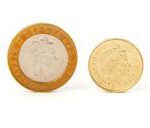Buy Physical Gold or Paper Gold: A Comprehensive Guide for Researchers
I. Introduction
A. Overview of Investing in Gold
Gold has been a trusted asset for wealth preservation and investment diversification for centuries. As researchers, understanding the choices between physical gold and paper gold is essential to make informed investment decisions.
B. Importance of Choosing Between Physical Gold and Paper Gold
The decision between physical gold and paper gold can significantly impact your investment strategy, risk profile, and overall financial goals. This guide aims to provide researchers with insights into the advantages, drawbacks, and considerations associated with each option.
C. Purpose of the Article
This article’s purpose is to equip researchers with the knowledge needed to make an informed choice between physical gold and paper gold. By the end, you’ll have a deep understanding of the factors to consider and the advantages and disadvantages of each investment method.
II. Understanding Physical Gold
A. Explanation of Physical Gold
Physical gold refers to tangible gold items, such as coins, bars, or jewelry. These assets are held physically and stored securely.
B. Benefits of Investing in Physical Gold
- Tangible Asset: Physical gold provides a tangible presence in your portfolio, offering a sense of security.
- No Counterparty Risk: Owning physical gold eliminates counterparty risk, as there is no reliance on a third party for ownership.
- Potential for Numismatic Value: Some coins and bars may hold numismatic or collector’s value, potentially enhancing returns.
- Portfolio Diversification: Physical gold can serve as an effective diversification tool, reducing overall portfolio risk.
C. Drawbacks of Physical Gold Investments
- Storage and Insurance Costs: Storing physical gold safely can be expensive, requiring secure vaults or insurance.
- Illiquid Asset: Converting physical gold into cash can be time-consuming and may involve additional costs.
- Difficulty in Selling: Finding a buyer for physical gold can be challenging, especially for larger quantities.
- Risk of Theft or Loss: Physical gold carries the risk of theft or loss, necessitating stringent security measures.
III. Understanding Paper Gold
A. Explanation of Paper Gold
Paper gold represents ownership of gold without physical possession. It includes financial instruments like gold ETFs, gold futures, and certificates.
B. Benefits of Investing in Paper Gold
- Accessibility and Convenience: Paper gold is easily accessible through brokerage accounts, providing convenience.
- Lower Transaction Costs: Investing in paper gold often involves lower transaction costs than buying physical gold.
- Liquidity and Ease of Selling: Selling paper gold is generally straightforward, offering liquidity.
C. Drawbacks of Paper Gold Investments
- Counterparty Risk: Paper gold investments involve counterparty risk, as you rely on financial institutions or markets.
- Lack of Physical Ownership: You do not physically own gold when investing in paper gold.
- Limited Exposure to Price Fluctuations: Paper gold may not fully capture gold’s price movements, depending on the instrument.
IV. Factors to Consider
A. Investment Goals and Time Horizon
Consider your investment objectives and how long you plan to hold the investment. Longer time horizons may favor physical gold for stability.
B. Risk Tolerance
Evaluate your risk tolerance, as physical gold may be more suitable for risk-averse investors, while paper gold offers flexibility.
C. Liquidity Requirements
Assess your liquidity needs and how quickly you may need to access your investment. Paper gold offers greater liquidity.
D. Storage and Security Concerns
Consider the costs and logistics of storing physical gold securely, especially for larger holdings.
V. How to Buy Physical Gold
A. Choosing Reputable Dealers or Mints
Select trusted dealers or mints for purchasing physical gold to ensure authenticity and quality.
B. Types of Physical Gold Products
Explore various forms of physical gold, including coins, bars, and jewelry, each with distinct advantages.
C. Storage and Security Considerations
Determine secure storage options, which may include bank vaults, private depositories, or home safes. Consider insurance for added protection.
VI. How to Buy Paper Gold
A. Options for Investing in Paper Gold
Understand the options available for paper gold investments, such as gold ETFs, gold futures contracts, and gold certificates.
B. Understanding Gold ETFs and Gold Futures
Learn how gold ETFs and gold futures work, including their advantages and risks.
C. Brokerage Account Setup
Set up a brokerage account to access and trade paper gold instruments, ensuring you choose a reputable broker.
VII. Making an Informed Decision
A. Assessing Your Investment Objectives
Align your choice with your investment goals, whether they involve long-term wealth preservation or short-term gains.
B. Evaluating Your Risk Tolerance
Consider your risk tolerance and how comfortable you are with the associated risks of each investment type.
C. Considering Your Liquidity Needs
Evaluate your liquidity requirements, factoring in any potential emergencies or financial needs.
D. Weighing the Advantages and Disadvantages
Balance the benefits and drawbacks of physical gold and paper gold in the context of your unique circumstances.
E. Seeking Professional Advice if Necessary
Consult with a financial advisor or investment professional to gain personalized insights into your gold investment decision.
VIII. Conclusion
A. Recap of Key Points
This guide has equipped you with the knowledge needed to make an informed choice between physical gold and paper gold.
B. Encouragement to Make a Well-Informed Decision Based on Individual Circumstances
Remember that the choice between physical and paper gold should align with your financial goals, risk tolerance, and investment horizon.
















